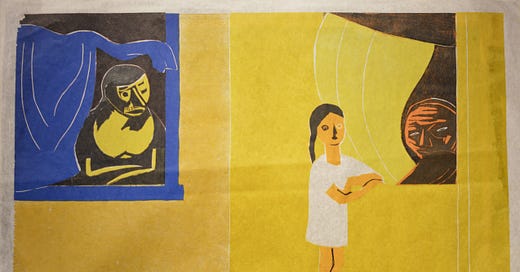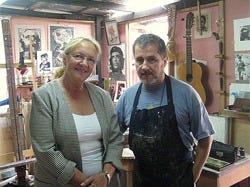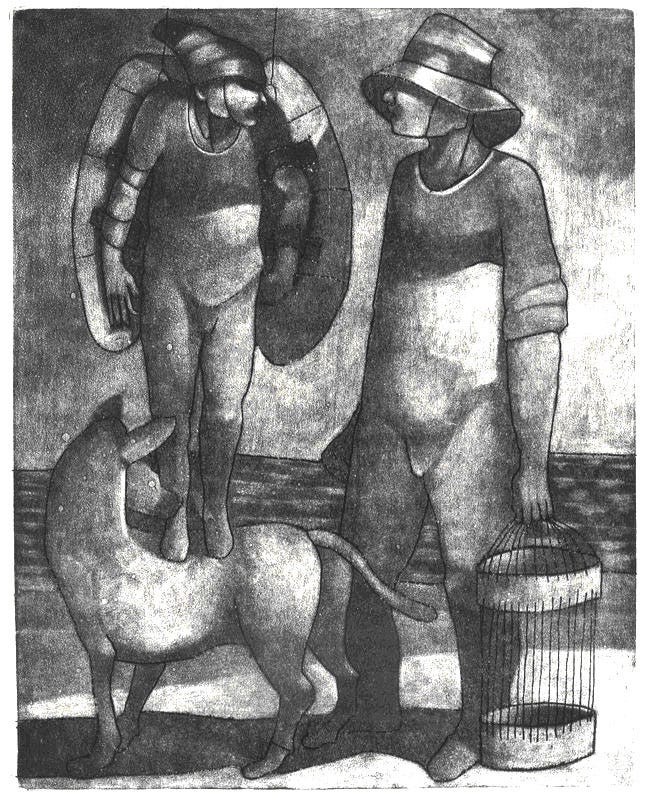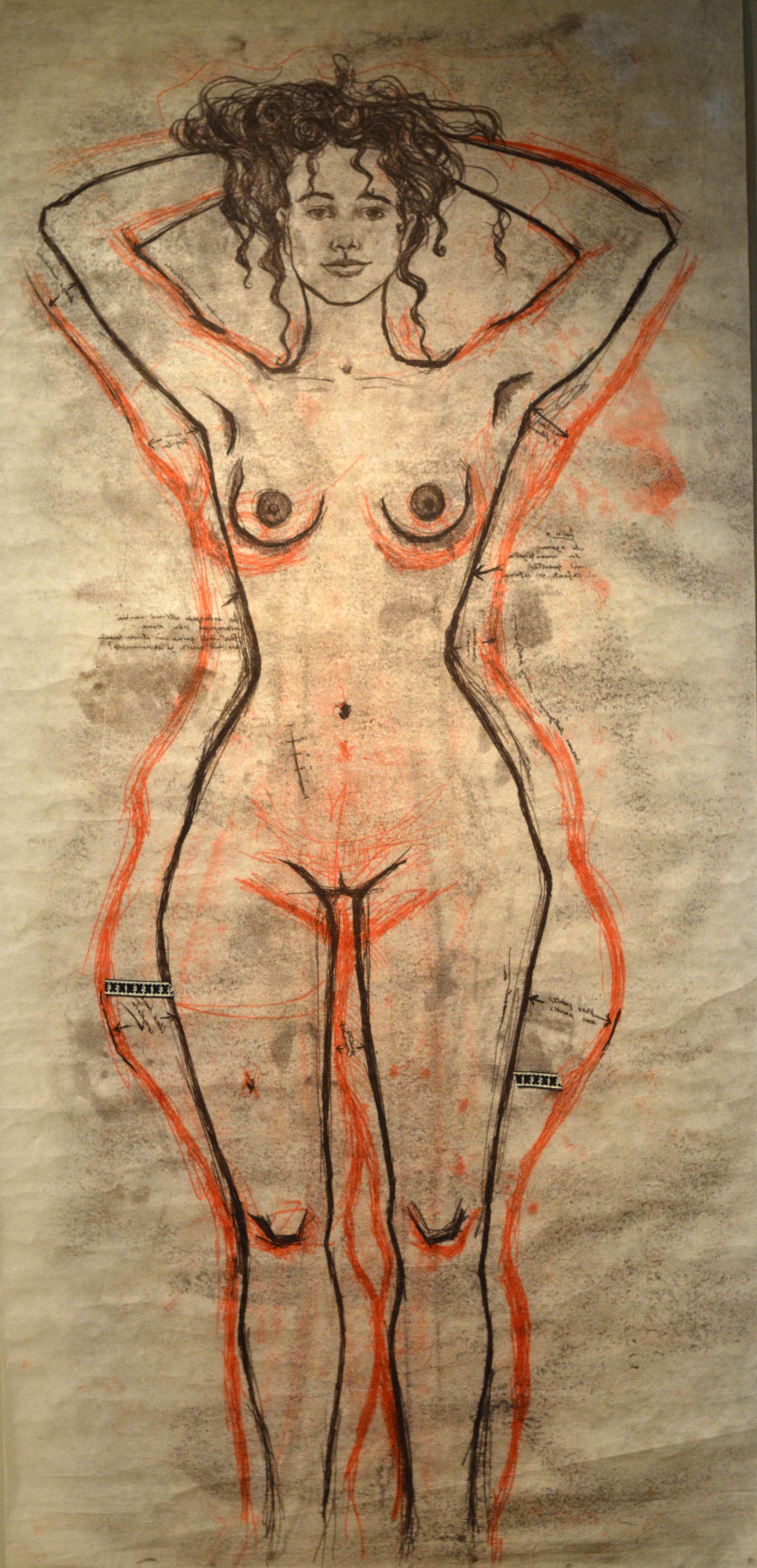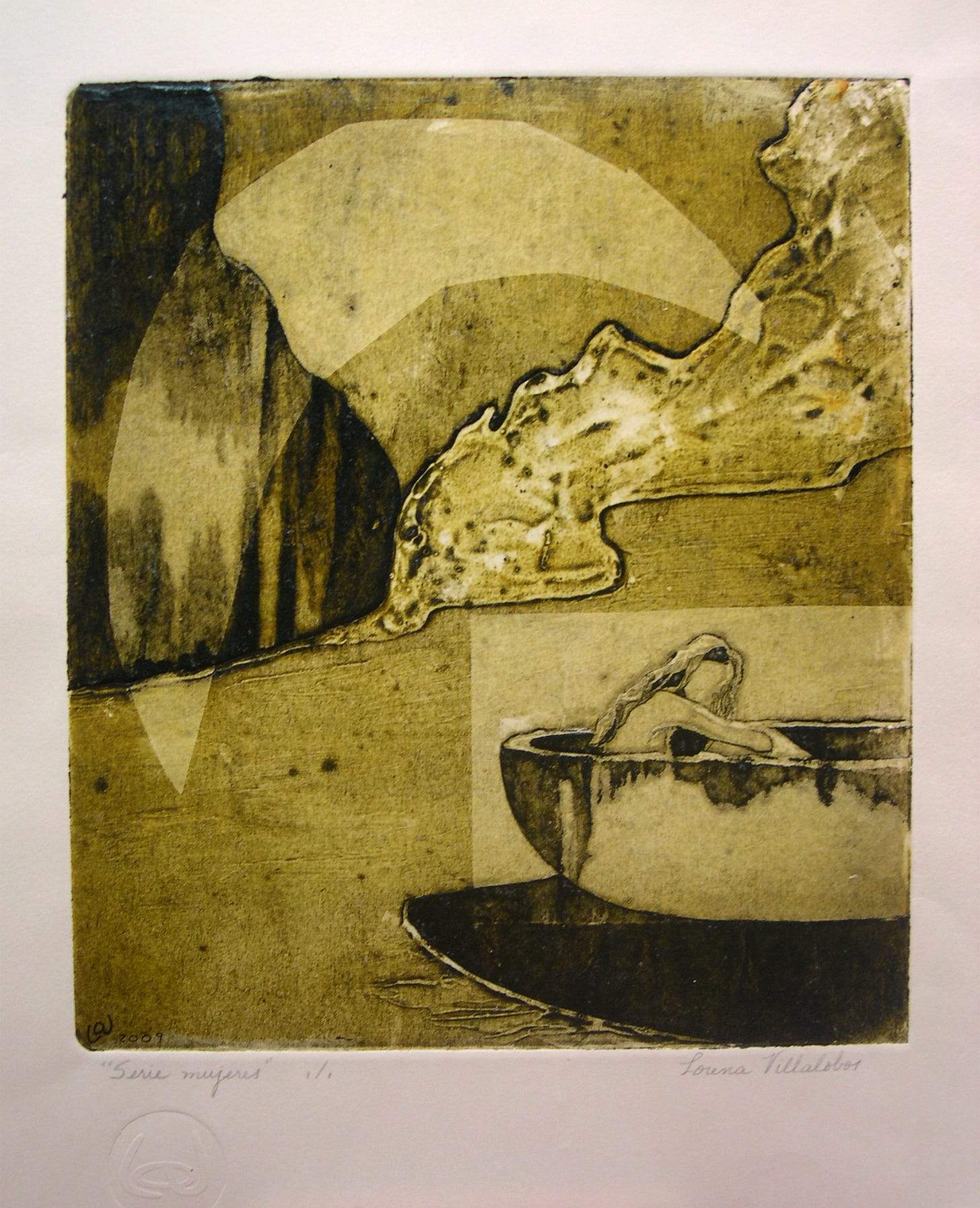for me, printmaking...
impressions made on paper...
polyamorousI have studied and practiced printmaking for many years. I like understanding the process in order to enhance the image or idea I am creating. And, oh so important, the textures and the colors of the papers, especially washi (handmade Japanese papers) thrills me.
Now, when I take a trip to Costa Rica to work with my Blue Morphos artists, I discover a history and a community rich with excellent printmakers. Many of them using multiples along with their painting, but some of them creating their oeuvres totally in hand-pulled prints.
Photography opened my eyes to design many years ago. My manual Nikkormat was my constant companion. Learning composition and understanding depth of field made me curious about design. My first attempt at designing art was making a card, cutting out a stencil and coloring with a can of silver spray paint on white card stock. And every year since I have designed and hand-crafted my holiday greetings… my trademark to friends and family.
I bought a silk screen kit and made cards with flat colors and calligraphy; I studied intaglio printmaking and created etchings and aquatints on thick cotton rag papers , some with chine-collé; I took classes with other artists to learn monotype techniques; I carved linoleum and wood for images in relief and introduced many children to the process over the years, sometimes using a potato.
This trip to Costa Rica introduces me to more printmakers and artists. The history starts with Francisco Amighetti and continues with the contemporary artists I meet.
Francisco Amighetti (1907-1998) is recognized as the first fine artist in the 20th century to use wood engraving, xylography, as a medium of expression. A young Francisco studied Japanese wood block prints and later in the 1940s, the art of pre-Columbian culture intrigued him. He rejected traditional European styles of art for more revolutionary ideas, like Surrealism infused with primitive elements. With a hint of expressionism and an allusion to social problems, sometimes dark, he painted colorful genre scenes of every day life.
From the words xylo (wood) and graph (draw), Xylography is engraving into a wooden matrix and printing onto paper in a single color, usually black. If multiple colors are used, the method is chromoxylography.
And he stamps the future of Costa Rican art with his inventiveness.
I visit the studio of Jorge Crespo, a professor of printmaking studies. Like many of the artists in Costa Rica, Jorge Crespo has his studio located in his home. He tells me about his own history; his family emigrating from Bolivia. The immigrants in the artwork of Jorge Crespo tell a story of identity, humor, humanity and of the fantastic. Masked and magical characters emerge from the matrix to tell their stories of an old life in a new place.
Then we enter the pleasantly lit studio with its printing press, papers, inks and the rich smells of creating art. Over in the corner is a contraption that looks like a homemade science experiment…and it is. Crespo explains to me how he has designed a system to etch electronically his plates for printing without toxic chemicals.
Before I leave, I order portfolios embossed with the Ford Fine Art logo. Jorge gives me a portfolio of his etchings and woodcuts to immigrate to the US for a new life... I will sell them.
I revisit my artist, Marcia Salas. Her studio is conveniently located in her home in San Pedro. I step into her world of re-creating form on paper. A warm light infuses the space through an open skylight. Sometimes a bird or butterfly finds its way into the space, lured by the delicious smells from the kitchen and possibly the images. Tables filled with sketches, books and supplies create small histories. The works-in-progress organized in sections reveal Marcia’s current subject: stylized horses and bulls, women and more horses.
She celebrates form and movement, often humorously. A series of life size etchings exposing perceived feminine forms won her a place in the National Museum, Museo de Arte Costarricense.
My final visit is to one of Crespo’s students, Lorena Villalobos. She imprints the fragility and the strength of nature in interesting ways. Water is a subject in many of her series whether printed as intaglio, collagraph, or monotype. Her studio is alive with materials… papers, inks, wax, and several impressive presses… she is constantly combining and experimenting.
I am impressed with the success of the legacy of Amighetti on this Central American nation, a leader in Latin American art for this type of original works-on-paper. The many artists influenced by his invention of a new way of printmaking and the variety of techniques as they learn, explore, create and grow.
I love them all, it is a polyamorous affair for me.
for paid subscribers… #2 lesson on multiples follows: Confused about Fine Art Prints?
Confused about Fine Art Prints?
Many people do not understand that fine art prints are original works of art. The processes are unique, detailed and sometimes very sophisticated. We are not talking about commercial and photomechanical reproductions: posters, giclees and offset lithographs. The terminology can be confusing and the processes complex. But once collectors understand the techniques and learn to see the differences, their appreciation for printmaking will make collecting prints a worthwhile, enjoyable and interesting venture. And artist’s editions tend to be more affordable and available than unique works.
Artists use the mediums as expressions and marks of their oeuvres just like painting, drawing and sculpting. The artists must first create the idea and image for the type of printmaking they want to use. They will then print a small edition, usually 100 or less, of hand-pulled prints, number and sign them.
In its simplest explanation, printmaking is transferring an image created on a matrix (plate or block) to a piece of paper or another surface. This can be achieved as a relief print (like a wood block), a stencil print (like silk screen), an intaglio (etching or engraving) or a planar technique (monotype or stone lithograph). All images will be reversed from the original except in the stencil prints. When printing more than one color or using several blocks or plates, registration marks are used to keep placement correct.
Relief:
A block of wood or sheet of linoleum (or even half a potato) is carved with a knife or gouge. The ink is applied to the un-carved surfaces with a roller and the paper placed on top. A special tool called a baren or a spoon is rubbed on the backside of the paper to transfer the image.
Intaglio:
A variety of techniques used to create images by incising a metal plate, either with a sharp instrument (engraving, drypoint and mezzotint) or with acid (etching, aquatint and photogravure). The chiseled plate is covered with ink then wiped clean, leaving color only in the incised areas on the matrix. The plate is then covered with a piece of damp paper and run through a press to transfer the ink. Different intaglio techniques are often combined to create varying effects of line and tone.
Collectors can easily identify an intaglio print as the metal plate is embossed into the paper when it goes through the press and the edges are clearly visible.
Engraving uses incised lines made with a burin. Cross-hatching is used to create areas of volume. The lines are strong and tapered at the ends. Drypoint is similar but burrs of metal create a softer line. These burrs wear away as the edition is printed making this technique critical for fewer number in the edition.
Etchings are first drawn on an acid-resistant coating, or ground, to reveal the metal beneath. The plate is then submerged in acid, which “bites” the lines into the metal plate. The ground is then removed and the plate inked for pressing. The etched lines are usually finer and freer than with engraving.
Aquatint is similar to etching but the resin used is different. It is often combined with etching to create rich and varied tones. It’s a similar process to etching but the resin ground is more granulated, so the acid bites the metal differently. The finished prints have a watercolor or ink wash appearance.
Xylography uses this method, but with a wood matrix rather than metal.
Planer:
Stone lithographs are created by a resist of oil and water. The artist draws on the stone with a greasy crayon or oil wash (tusche). The stone is covered with water and ink made of oil is spread over it, adhering only to the oily image. The stone is covered with a sheet of paper and run through a press. Collectors can recognize them because of their painterly qualities.
Monoprints and monotypes are created using a variety of matrixes. Monoprints are when the matrix is unchanged but each print made is different (like printing a leaf in multiple colors.) Monotypes are where the image is painted or applied on a matrix and only one print can be made. Monotypes sometimes add collage or chine-collé elements.
Stencil:
Serigraphy (silkscreen) uses a piece of cloth or mesh as the matrix. Areas to be printed are created with an emulsion that does not allow the ink to pass through or as simply as a cut-out stencil. The screen is laid over the paper to be printed and the ink is pressed through the matrix with a squeegee. Each color requires a separate screen. The process creates areas of color without tone or shade difference. Think Andy Warhol images. This process can be quite commercial but hand pulled editions in small numbers are collectible.
Giclees are popular commercial prints. The word means spray of ink and they are printed on canvas or paper in inkjet printers. Like offset lithos (using presses that create newspaper and business cards) and posters, they are not art created for the processes being used. If a photo is taken of artwork and printed mechanically, it is not considered fine art. If the artwork is created digitally like a photograph or on the computer, printing in this manner can be considered collectible.
Many artists have used printmaking in their oeuvres. It is a challenging and creative process all it’s own. Some artists are only interested in making multiples and become masters in the processes. Collectors have the opportunity to own original works of art by their favorite artists at prices that are considerable less. My partner, Mark Ford, and I have a general rule of thumb to determine the values. We take the value of a similar quality and size unique work by the same artist and divide it by the number in the edition. Therefore, if an original work sells for $10,000, an etching with an edition of 100 is valued at $1,000.
